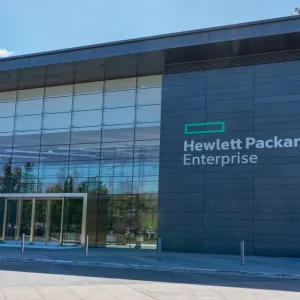In 1975, Steven Spielberg and a rubber shark named Bruce changed cinema for ever. Jaws ushered in the era of the summer blockbuster, and cinema hasn’t looked back since.
Forty years later, there’s another summer blockbuster. And its developers are hoping for an equally transformative effect. Not the dino-retread of Jurassic World, but Windows 10: Microsoft’s latest, all-guns-blazing effort to create a universal operating system.
If business customers respond in the way that Microsoft hopes, then we are entering a new era of enterprise IT. Windows 10 is being positioned as a complete update to Windows. It’s a single ecosystem for all device types with Microsoft’s software, including phones, computers, tablets, TVs.
The biggest news of course, is that, according to Microsoft, it will be the last major OS migration for the enterprise. Instead of the big-bang upgrades to the operating system that have punctuated the past twenty years of enterprise computing, from now on there will be a more regular series of on-going updates. Microsoft has embraced agile development practices and the app culture that comes with it.
So far, our customers have fallen into two distinct groups: those expressing enthusiasm at the opportunity that they and their teams will have to better support mobility and agility in their organisations. The second, with memories of the Windows 7 upgrade still all too fresh, are adopting a much more wait-and-see approach.
We think there’s more to like than to fear, and in most cases the opportunities for the enterprise outweigh the challenges. Nonetheless, the transition to the Windows 10 OS and the new mind-set that accompanies it should not be underestimated.
For a start, Windows 10 shows how far Microsoft has embraced the consumerisation of IT. There are general improvements to the user interface, for example, and the return of the start menu that was missing in action in windows 8 and hidden in 8.1.
There’s also the promise for universal applications and improved support for mobility with apps designed to work across Windows PCs, tablets and phones. More consumer-like options for the enterprise include Cortana (Microsoft’s version of Siri) and Windows Hello, which offers alternative login options such as facial recognition and fingerprinting.
But for IT departments still wary of consumerisation in their own environment, this could be a mixed blessing. Because Windows 10 promises to offer more flexibility across devices and more consumer-like capabilities, any IT department harbouring visions of a more empowered, digitally-enabled workforce will find it easier to realize them.
But as Microsoft is offering free upgrades to consumer users currently on Windows 7 and 8, it is possible that adoption rates in the enterprise will lag behind those of the workforce – especially in industries where the consumer world heavily influences work technology.
If Gartner and Forrester have both got analysis right, most enterprises won’t plan full scale migrations until at least the end of 2016. So there is a strong possibility that most businesses will remain out of step with consumers.
And although Windows 10 addresses a number of the challenges associated with making BYOD work, it doesn’t necessarily help businesses who are concerned about the security and privacy issues of employee-owned devices being used in the work place.
When firms do get round to implementation, there will be fewer compatibility issues to deal with during the migration itself – to the relief of those still in recovery from the complexity and unplanned costs of the move to Windows 7.
Nonetheless, Gartner still recommends a 12-18 month time frame to plan for pre-migration activities for the move to Windows 10. No one should underestimate the preparation work ahead of migrations – even this one – especially if the environment has known complexities.
But if all goes according to plan, this will be the last major migration upheaval. There will be a new more regular rhythm of upgrades, without the disruption of the previous big bangs. IT departments need to adjust their planning and their ways of thinking to the greater agility required to make the more continual stream of evolving upgrades work.
Once Windows 10 is implemented, in most cases IT teams will have approximately 12-18 months to test and deploy rolling updates before risking dependency issues with on-going security fixes – so faster testing and deployment approaches will be needed to ensure highest levels of security.
There are things IT departments can do to help this new way of working. Workspace management technologies and automation capabilities can help with the transition, for example, and minimize the effort needed when organizations do decide to take the leap to Windows 10. Equally, there are tools available that help IT managers get a more accurate picture of how their workforce actually uses technology – knowledge that will be invaluable in a newly agile and continually updating IT environment.
Change is always challenging – even when it is change to make things easier in the long term. Migrating, implementing and then the long-term managing of Windows 10 and whatever follows it absolutely require new ways of thinking. Windows 10 is being touted as the end of an era. It’s probably more helpful to think of it as the start of a new one.






